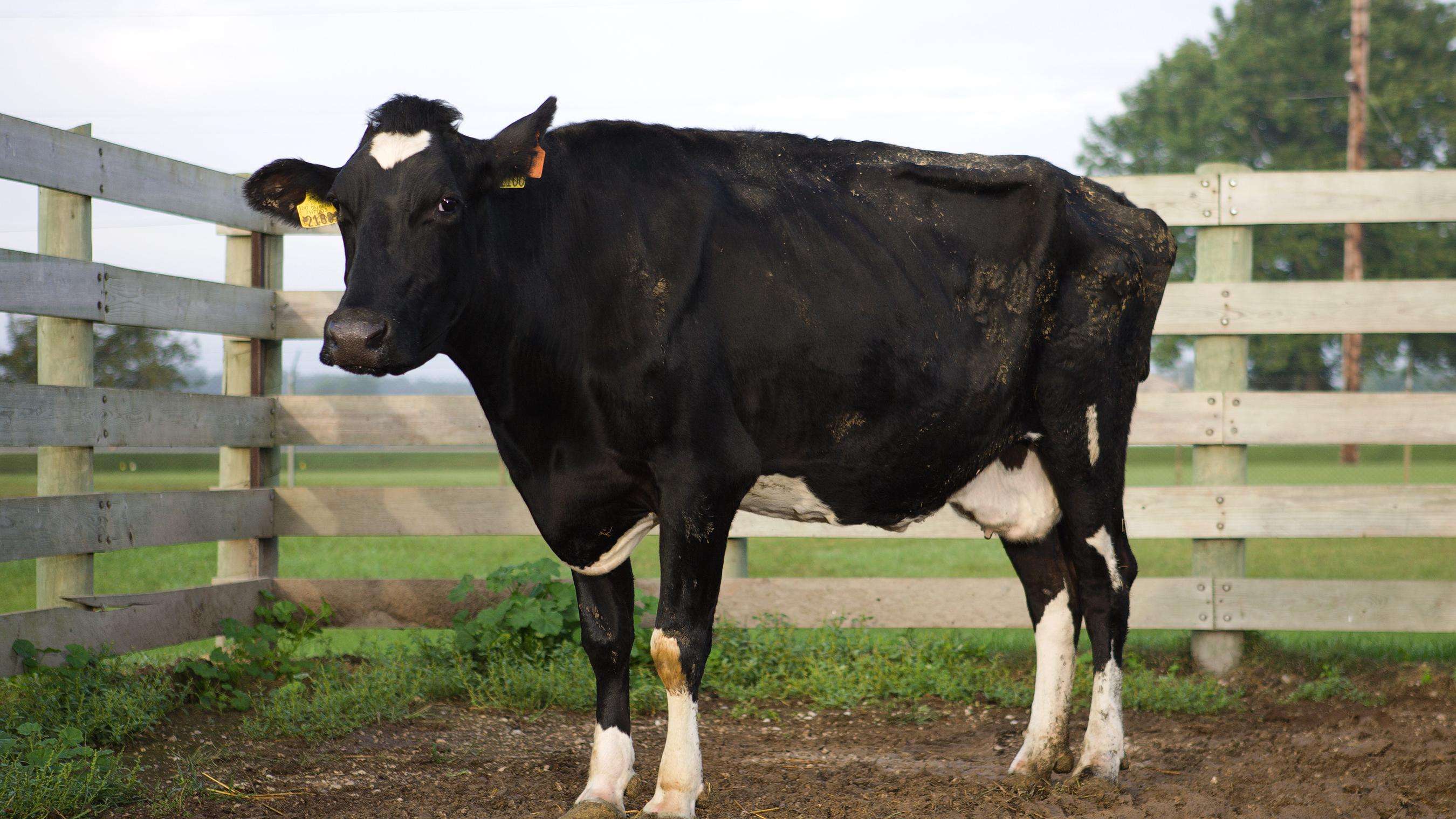Johne's Disease

Johne's disease (pronounced "yo-knees") is an infection of the small intestine that affects cattle, sheep, goats, and other ruminants (hoofed animals). It's caused by a resistant species of bacteria (mycobacterium avium subspecies paratuberculosis) that belongs to the same family as tuberculosis and leprosy.
Johne's disease is endemic worldwide, including in the United States. The disease is contagious. It typically causes a chronic form of inflammatory bowel disease (granulomatous enteritis) that leads to progressive weight loss, debilitation, and eventually death. Economic losses in infected herds include reduced milk production, early culling, and poor condition at culling.
Signs of Johne's disease rarely show up until years after the initial infection, which usually occurs shortly after birth. Over time, the intestines become thick and less efficient at absorbing nutrients.
When symptoms are finally noticeable, here's what you may see:
- Diarrhea and weight loss, despite a normal appetite
- Some infected animals appear malnourished and weak; others have chronic diarrhea.
- It often starts within a few weeks after a stressful event, like calving.
- Soft swelling under the jaw (known as "bottle jaw")
- This may occur several weeks after the onset of diarrhea due to protein loss from the bloodstream into the digestive tract.
- Animals at this stage of the disease will not live very long, perhaps a few weeks at most.
- Declining or reduced herd production, especially in 3- to 6-year-old cows
Animals are most susceptible to infection in the first year of life. Newborns most often become infected by swallowing small amounts of infected manure from the birthing environment or udder of the mother. In addition, newborns may become infected in the uterus or by swallowing bacteria passed in milk and colostrum.
However, animals of any age can become infected. All infected animals shed the organism through feces, creating a possible exposure route.
Here are some basic prevention strategies:
- Take precautions to avoid introducing infected animals into your herd.
- Keep a closed herd or require that replacement animals come from test-negative herds.
- Buy animals from low-risk herds.
- Protect newborns and young animals from coming into contact with contaminated manure.
- Have separate birthing areas and keep them clean.
- Use different equipment to handle feed and move manure.
- Make sure water sources are clean.
- When possible, raise young animals in areas separate from adult animals and their manure.
- Manage colostrum and milk.
- Use colostrum from Johne's-negative animals.
- Don't pool colostrum.
- Clean the udder and teats before collecting the colostrum.
- Whenever possible, feed an artificial milk replacer or pasteurized milk instead of raw milk.
- Never feed pooled milk or waste milk.
There's no vaccine available in the United States for Johne's disease. Work with your veterinarian to develop a plan for Johne's prevention and control at your farm.
There's no treatment for Johne's disease. However, herd and flock cleanup plans can reduce the prevalence of infection in your animals and eventually eliminate the disease from your herd or flock.
Managing infections can take time. The bacteria that causes Johne's disease can survive for up to a year in the environment, contaminating pastures. Control measures may include:
- Tilling the ground or grazing with non-replacement feeder cattle.
- Identifying all females in the herd.
- Identifying and removing or separating all test-positive animals.
- Culling or separating offspring of infected mothers as soon as possible.
For more information, contact your veterinarian or State extension office.
Report Signs of Animal Disease
Producers or owners who suspect an animal disease should contact their veterinarian to evaluate the animal or herd. Find an accredited veterinarian.
Animal health professionals (veterinarians; diagnostic laboratories; public health, zoo, or wildlife personnel; and others) report diagnosed or suspected cases of nationally listed reportable animal diseases to APHIS District Offices and to the State animal health official as applicable under State reporting regulations.
Controlling Johne's Disease
Johne's disease is endemic in the United States. Based on the 2007 Dairy NAHMS study, about 68 percent of U.S. dairy herds have at least one cow that tests positive for Johne's, with herd prevalence approaching 100 percent in large dairy herds. Although infection seems less widely distributed in beef and goat herds and sheep flocks, Johne's is nonetheless of critical significance to all producers.
Johne's disease can have severe economic impacts on infected herds. It's imperative that U.S. herds and flocks have safeguards against becoming infected. Identifying and protecting non-infected herds and flocks will provide a source of breeding stock and replacement animals for others and help reduce the disease's national prevalence.
More Information
USDA provides guidance on managing this disease and helps States coordinate their own Johne's disease control programs. For details, view USDA's Uniform Program Standards for the Voluntary Bovine Johne's Disease Control Program (184.9 KB).
Diagnosis and Testing
Johne's disease is both a herd/flock problem and an individual animal problem. If you see one or more cows with diarrhea or weight loss, consider Johne's disease a possible cause.
Diagnosing Johne's disease involves a combination of history, clinical signs, and test results. Several tests are available to detect the disease or the bacteria that causes it: fecal or tissue culture, tissue histology, agar gel immunodiffusion (AGID), and enzyme-linked immunosorbent assay (ELISA).
APHIS' National Veterinary Services Laboratories (NVSL) provides Johne's disease serologic and organism detection check testing. NVSL also offers a fecal culture training course to laboratories. For more information, contact NVSL.
View the list of laboratories approved to perform Johne's serology, organism detection check testing, or both.

